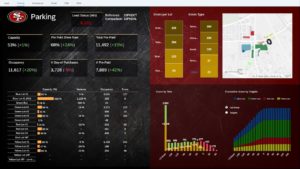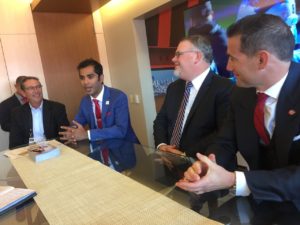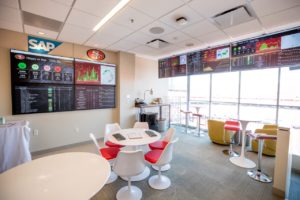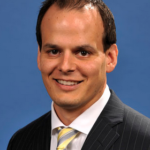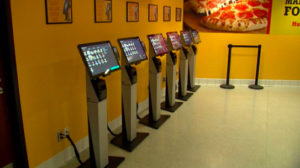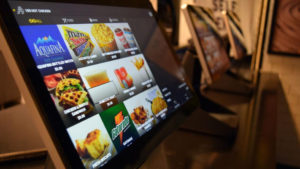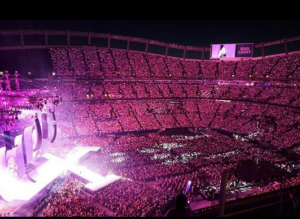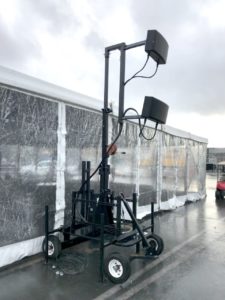
DAS on a cart: DAS Group Professionals deployed mobile DAS stations to help cover the parking lots at Levi’s Stadium for the college football playoff championship. Credit: DGP
In a press release blog post where AT&T said it saw 9 terabytes of cellular data used over the college football playoff championship-game weekend in the Bay area, AT&T also crowned a cellular “data champion,” reporting that Texas A&M saw 36.6 TB of data used on the AT&T networks in and around Kyle Field in College Station, Texas.
(Actually, AT&T pointedly does NOT declare Texas A&M the champs — most likely because of some contractural issue, AT&T does not identify actual stadiums or teams in its data reports. Instead, it reports the cities where the data use occurred, but we can figure out the rest for our readers.)
For the College Football Playoff championship, AT&T was able to break down some specific numbers for us, reporting 3.7 TB of that overall total was used inside Levi’s Stadium on game day. Cell traffic from the parking lots and tailgating areas (see photo of DAS cart to left) added another 2.97 TB of traffic on AT&T’s networks, resulting in a game-day area total of 6.67 TB. That total is in Super Bowl range of traffic, so we are excited to see what the Wi-Fi traffic total is from the game (waiting now for the college playoff folks to get the statistics finalized, so stay tuned).
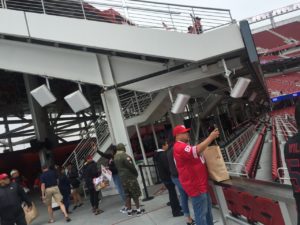
DAS antennas visible at Levi’s Stadium during a Niners game this past season. Credit: Paul Kapustka, MSR
Any other carriers who want to add their stats to the total, you know where to find us.
Back to Texas A&M for a moment — in its blog post AT&T also noted that the stadium in College Station (which we will identify as Kyle Field) had the most single-game mobile usage in the U.S. this football season, with nearly 7 TB used on Nov. 24. Aggie fans will remember that as the wild seven-overtime 74-72 win over LSU, an incredible game that not surprisingly resulted in lots of stadium cellular traffic.
